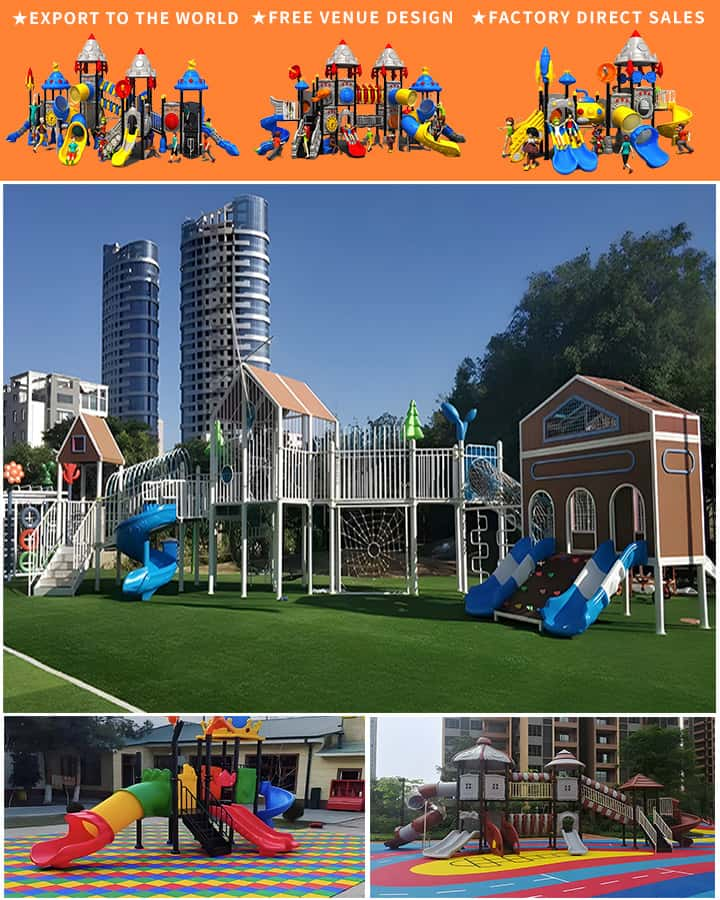When it comes to designing an outdoor playground, selecting the appropriate surface is as crucial as choosing the swings, slides, and climbing frames. A well-chosen surface not only enhances safety but also adds to the aesthetic appeal of the playground. Here are some popular outdoor playground surface options that combine durability, safety, and functionality.
1. Rubber Surfaces: Soft and Shock-Absorbing
Rubber surfaces are among the most popular choices for playgrounds due to their excellent shock-absorbing properties. These surfaces come in various forms, such as poured-in-place (PIP) rubber, loose-fill rubber, and bonded rubber mulch. Poured-in-place rubber is a seamless surface that provides consistent cushioning, while loose-fill rubber requires periodic replenishment but offers good impact absorption. Bonded rubber mulch is made from shredded rubber and glue, offering a more affordable yet still effective option.
2. Wooden Mulch: Natural and Sustainable
Wooden mulch is another excellent choice for playground surfaces. It is a natural material that provides good cushioning and is easy on little feet. However, wooden mulch can harbor insects and must be regularly maintained by replenishing it. Despite these downsides, its eco-friendly nature makes it a preferred option for many environmentally conscious communities.
3. Grass: Classic and Cost-Effective

A lush, well-maintained grass surface is both classic and cost-effective. Grass is soft underfoot and provides a natural look that integrates well with outdoor settings. However, it can get muddy when wet and may require more maintenance compared to other surfaces. For areas with heavy use or adverse weather conditions, synthetic turf might be a better alternative.
4. Sand: Simple and Budget-Friendly
Sand is one of the simplest and most budget-friendly options available. However, it is generally recommended for smaller children’s playgrounds because it provides less cushioning than other materials. Sand does offer good drainage but can shift and require regular raking to maintain an even surface.
5. Artificial Turf: Low Maintenance and Durable
Artificial turf has gained popularity in recent years thanks to its low maintenance needs and durability. This surface mimics natural grass but doesn’t suffer from the same issues related to muddiness or unevenness. It is ideal for areas with high foot traffic and provides a consistent playing surface year-round. However, quality artificial turf can be expensive initially.
6. Concrete: Durable but Less Safe
Concrete is a highly durable surface often used in commercial playgrounds where heavy equipment is involved. While concrete itself is hard and unforgiving, it is usually installed with a layer of rubberized safety surfacing to provide adequate cushioning. This combination ensures longevity while meeting safety standards.
7. Wetpour Surfacing: Versatile and Customizable
Wetpour surfacing is a type of rubber surface made from fine particles mixed with a binding agent and water. This surface offers excellent slip resistance and can be customized with different colors and designs, making it visually appealing. It is particularly good for areas with frequent rain as it drains well and remains usable even when wet.
Conclusion
Choosing the right playground surface involves balancing factors such as safety, durability, maintenance, and aesthetics. Each material has its pros and cons, and the best choice will depend on the specific needs of your playground and community. By understanding the benefits of each surface option, you can create a safe, enjoyable, and welcoming outdoor play area for children of all ages.




